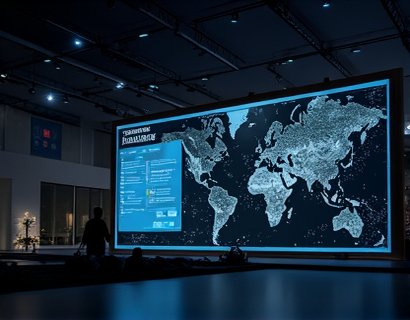Streamlining Web Development with Custom Placeholder Code Generators
In the fast-paced world of web development, efficiency and productivity are paramount. One innovative solution that has gained traction among developers, designers, and business owners is the custom placeholder code generator. This tool is designed to save time and enhance efficiency by providing customizable templates that can be used to generate placeholder website code. The primary goal is to create professional and visually appealing content without the hassle of manual coding, ensuring that the website design is both functional and attractive.
The concept of using placeholder code is not new, but the advancement in technology has made it more accessible and user-friendly. Traditionally, developers would spend a significant amount of time creating dummy content to test layouts and designs. With a custom placeholder code generator, this process is automated, allowing professionals to focus on more critical aspects of web development.
Benefits of Using Placeholder Code Generators
One of the most significant advantages of using a placeholder code generator is the time savings. Instead of writing code from scratch, developers can quickly generate a basic structure with dummy content. This allows for faster prototyping and iteration, which is crucial in today's competitive market where time-to-market is a key differentiator.
Another benefit is the consistency and professionalism that placeholder code provides. The generators can produce code that adheres to best practices and design standards, ensuring that the placeholder content looks polished and professional. This is particularly important for clients who want to see a realistic preview of their future website.
How Placeholder Code Generators Work
Placeholder code generators typically offer a range of customization options to suit different needs. Users can choose from various layouts, color schemes, typography, and content types. For instance, a generator might allow you to select a grid layout, a single-column layout, or a full-width layout, depending on the desired design.
The customization extends to the content itself. Users can choose between different types of placeholder text, such as Lorem Ipsum, which is a standard placeholder text used in the industry, or custom text that can be input manually. Some advanced generators even support image placeholders, allowing users to preview how images will look on the website without uploading actual files.
Tools for Different Stakeholders
Placeholder code generators are versatile tools that cater to a wide range of users, including web developers, designers, business owners, and digital agencies. For web developers, these tools provide a quick way to set up a development environment with a basic structure and dummy content. This allows them to focus on coding and implementing features rather than getting bogged down by the initial setup.
Designers can use placeholder code generators to create visual mockups and prototypes. By customizing the layout and styling, designers can present their ideas more effectively to clients, ensuring that everyone has a clear understanding of the final product.
Business owners and entrepreneurs can leverage these tools to showcase their website's potential to investors or stakeholders. A well-designed placeholder website can serve as a compelling presentation tool, demonstrating the expected user experience and functionality.
Enhancing Efficiency for Digital Agencies and Tech Startups
For digital agencies and tech startups, efficiency is crucial for delivering projects on time and within budget. Placeholder code generators streamline the initial stages of web development, allowing teams to move faster and more efficiently. By reducing the time spent on setting up basic structures and dummy content, agencies can allocate more resources to feature development and client collaboration.
Tech startups, in particular, benefit from these tools as they often operate with limited resources. The ability to quickly generate placeholder websites enables startups to validate their ideas and gather feedback from potential users without investing extensive time and money upfront.
Creating Attractive and Functional Websites
While placeholder code generators excel at providing a quick start, it's essential to ensure that the final website is both attractive and functional. The generators can produce a solid foundation, but the real work begins with customizing the content, adding interactive elements, and optimizing for performance and SEO.
Developers can use the generated code as a starting point and build upon it, integrating their own styles, scripts, and content. The consistency provided by the placeholder code ensures that the initial design is cohesive, making it easier to maintain a uniform look and feel throughout the development process.
Best Practices for Using Placeholder Code
To get the most out of placeholder code generators, it's important to follow best practices. First, choose a generator that offers a wide range of customization options to ensure the placeholder code aligns with your vision. Second, use placeholder text wisely; while Lorem Ipsum is convenient, custom text can provide more context and clarity for stakeholders.
Additionally, test the generated code thoroughly to ensure compatibility across different browsers and devices. This step is crucial for identifying and fixing any issues early in the development process. Finally, treat the placeholder code as a template and plan to refactor and enhance it as you move forward with the actual development.
Conclusion
Custom placeholder code generators are powerful tools that can significantly streamline the web development process. By providing quick, customizable templates, these tools save time, enhance efficiency, and ensure a professional appearance. Whether you're a solo developer, part of a digital agency, or a tech startup, incorporating a placeholder code generator into your workflow can lead to faster project completion and a more polished final product.
As the demand for efficient web development continues to grow, tools like placeholder code generators will become increasingly essential. Embracing these technologies not only improves productivity but also allows professionals to focus on what they do best—creating exceptional online experiences.











































